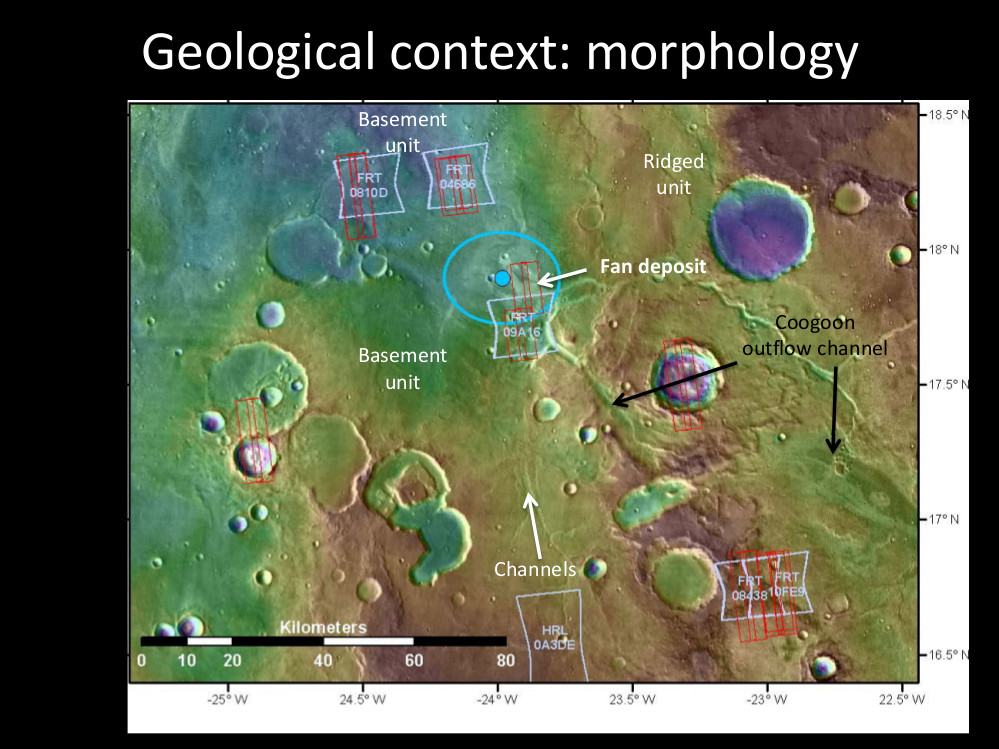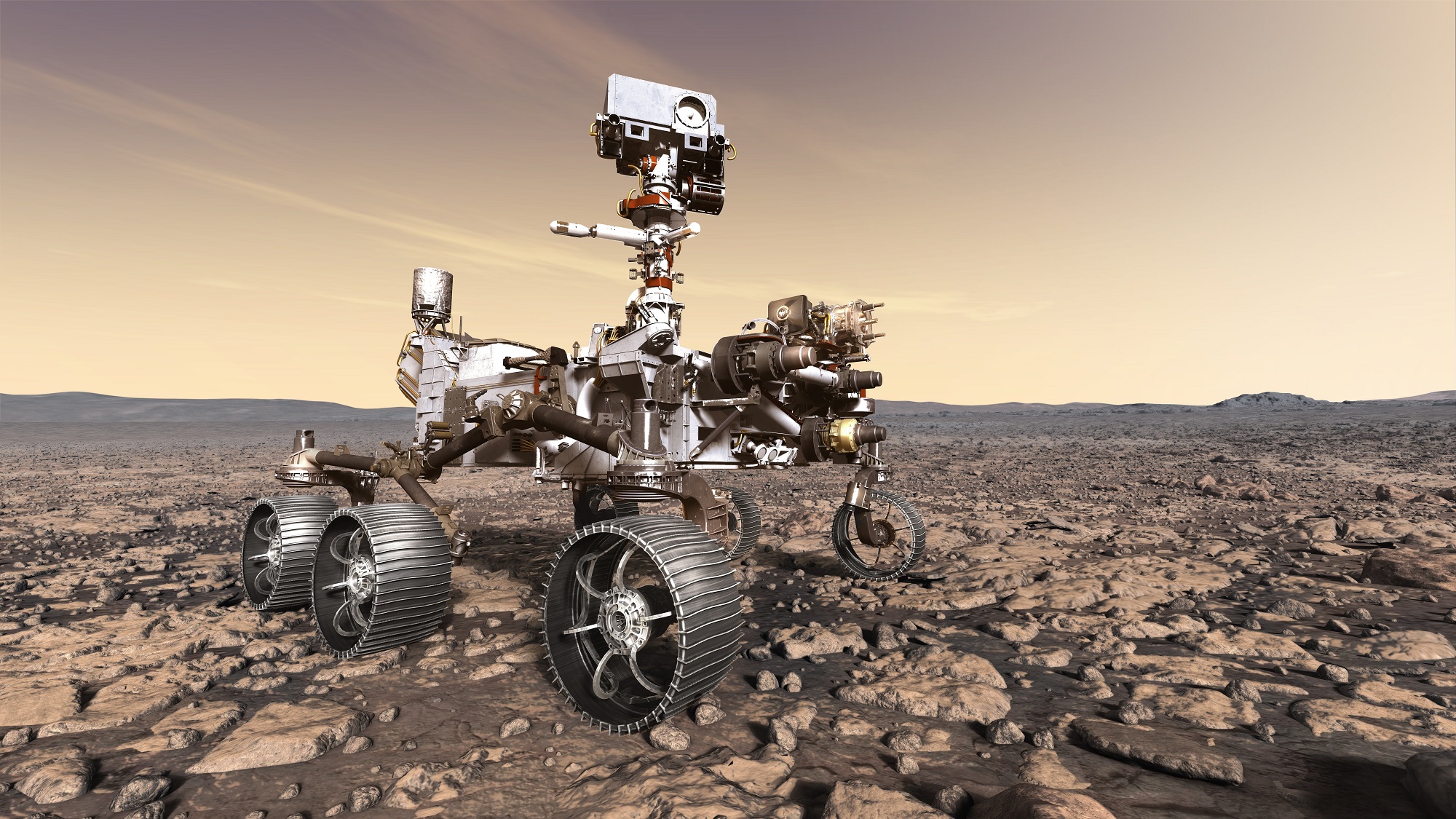NASA’s Mars 2020 Rover is heading to Mars soon to look for fossils. The ESA/Roscosmos ExoMars rover is heading to Mars in the same time-frame to carry out its own investigations into Martian habitability. To meet their mission objectives, the scientists working the missions will need to look at a lot of rocks and uncover and understand the clues those rocks hold.
To help those scientists prepare for the daunting task of analyzing and understanding Martian rocks from 160 million km (100 million miles) away, they’ve gone on a field trip to Australia to study stromatolites.
In geology, they have a saying: “There are rocks, and then there are ROCKS.” The point is, you can look at a lot of rocks before you find one that holds some significant evidence. How can scientists make sure they recognize important evidence when they find it?
“I organized this first joint Mars 2020-ExoMars science expedition so scientists from our two great missions could gain a new perspective on these one-of-a-kind stromatolites;”
Mitch Schulte, Mars 2020 Program Scientist, NASA.
Ken Farley is a Mars 2020 Project Scientists at JPL, in Pasadena California. In a press release, Farley said, “While we expect to find many significant rocks during both Mars 2020 and ExoMars missions, we also have to leave open the possibility we could find one or more very special rocks,the kind whose discovery would not only speak volumes about the history of Mars but contribute significantly to the discussion of life elsewhere in the universe.”
Recently, team members from Mars 2020 Rover and the ExoMars Rover travelled to the Pilbara Region in Australia. The area is well-known in scientific circles for being home to some of Earth’s oldest rocks. In those rocks are stromatolites, the fossilized remains of colonies of microbes that lived in the water on early Earth. While there, the scientists paid a visit to the Dresser Formation, where some of the oldest fossilized records of life on Earth exist.

Scientists know so much about the Dresser Formation and the Pilbara Region that they can paint a vivid picture of what the area was like in the deep, geological past.
Martin Van Kranendonk, director of the Australian Centre for Astrobiology at the University of New South Wales, acted as guide for the visiting scientists. “Some 3.48 billion years ago, this area was home to a caldera, or collapsed volcano, filled with hot, bubbling seawater,” said Van Kranendonk. “At the same time, this location was also home to structures called microbial mats – visible to the naked eye but composed of microscopic organisms. Today you would know them as simple pond scum, but back then they were the most complex lifeforms on Earth.”
These microbial mats secreted mucous that trapped grains of sediment in the water. As time passed, these microbes built up layer over layer of sediment, forming stromatolites.
“A stromatolite is quite subtle to the untrained eye,” said Van Kranendonk. “But once you know the details, you recognize that these wavy, wrinkly rocks have a structure different from that which can be explained by just geology.”
The search for this type of fossilized evidence of life is heating up on Mars. It’s one of the next steps in understanding that planet. And scientists think that the same process that formed stromatolites in the Dresser Formation probably took place on Mars.
“Finding evidence of life on another world, if it ever existed, will require tenacity and a whole lot of brainpower.”
MITCH SCHULTE, MARS 2020 PROGRAM SCIENTIST, NASA.
The Mars 2020 rover will land at Jezero Crater. Jezero Crater was home to a paleolake some 3 to 4 billion years ago, around the same time stromatolites were doing their thing on Earth. It was about the same size as Lake Tahoe, and a river flowed into it, carrying sediments. Scientists think that those are ideal conditions for stromatolites to form around the edge of the lake.

“It’s hard to think of a better recipe for life to thrive – and for its record to be preserved – than the one we see at Jezero,” said Ken Williford, deputy project scientist for Mars 2020 at JPL.
The ExoMars rover, named Rosalind Franklin, will land at Oxia Planum, an area that sits about 3000 meters below the Martian mean, and one that contains a large exposed area of clay-bearing rocks about 3.9 billion years old. Oxia Planum contains clays rich in iron and magnesium, indicating that they formed in the presence of water. A feature called the Coogoon Outflow Channel contains a delta that scientists think could hold preserved signs of ancient life.

If either mission is fortunate enough to encounter stromatolites, it’ll be the human operators that identify them. This field trip to the Australian Outback is an opportunity for scientists to get close up views of the different stromatolites that have formed in Earth’s ancient past, and possibly in Mars’ too.

Mitch Schulte, a Mars 2020 Program Scientist at NASA, arranged this field trip because he felt that seeing stromatolites in a laboratory was much different than seeing them in their geological context.
“I organized this first joint Mars 2020-ExoMars science expedition so scientists from our two great missions could gain a new perspective on these one-of-a-kind stromatolites; a laboratory setting just can’t provide the same context,” said Schulte. “That applies to the experience as a whole, too – the conversations, comparing of notes and planning for future exchanges that was done here in the Pilbara will go a long way to advance Mars science.”
Though the two rovers will land on Mars within weeks of each other—Mars 2020 first, followed by Rosalind Franklin (ExoMars)—and though they’re both studying Martian ancient habitability, they’re taking somewhat different approaches.
Mars 2020 will drill shallow holes into Martian rock, and analyze them on-site. It’ll collect more than 40 of these samples, and will also seal them in a container to be collected by a future mission. Then they’ll be returned to Earth, where more powerful analysis can be carried out.

The Rosalind Franklin rover can drill much deeper. At least twice, it will drill about 2 meters (7 ft.) into the Martian crust. Then the rover will use its sophisticated instrument to study the samples. The results from either rover can help inform the operations and results of the other.
“These two Mars missions will be revolutionary because they are complementary.”
Teresa Fornaro, Science Team Member, ExoMars
“These two Mars missions will be revolutionary because they are complementary,” said Teresa Fornaro, a science team member for the Mars Organic Molecule Analyzer instrument aboard ExoMars. “Two different rovers with two different sets of instruments, exploring at the same time two different landing sites. Some of the capabilities of Mars 2020 in characterizing the surface environment could help guide ExoMars on where to drill. Conversely, knowledge of the alteration of possible organics as a function of depth by ExoMars could help Mars 2020 select the most interesting surface samples to collect for future return to Earth.”
The team members behind both missions are jazzed up and eager to get going. Both missions have years of preparation behind them. But the day is quickly approaching when both rovers are on the surface and working. (Assuming that both landings go well.)
“What is happening working out here in the field is also happening in the halls of NASA and ESA,” said Schulte. “Finding evidence of life on another world, if it ever existed, will require tenacity and a whole lot of brainpower. If there is a stromatolite in the range of the rovers, I think we have a good chance of finding it … and we’ll find it together. This trip will have helped with that.”

